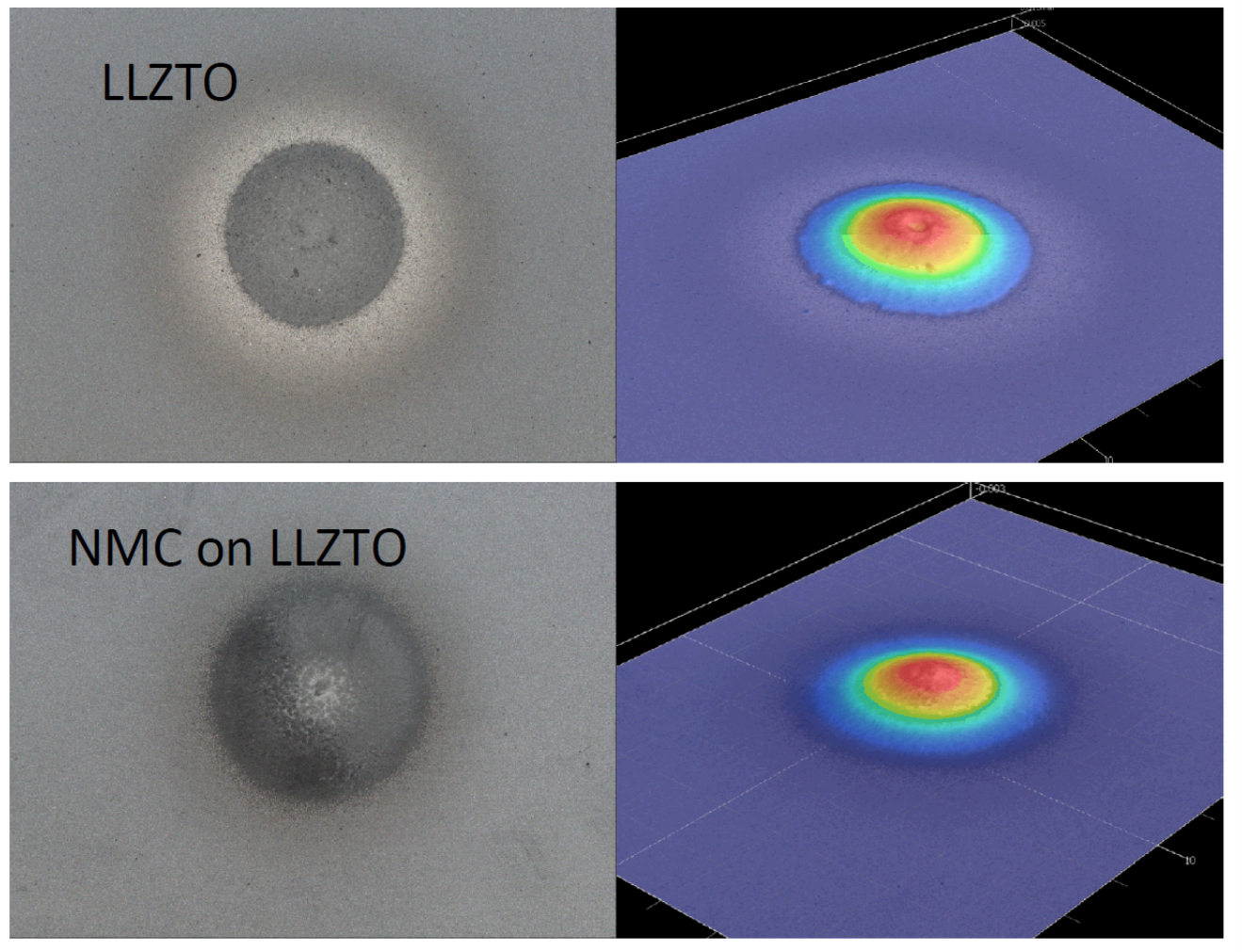Cold spray is a deposition method for forming a material coating on a substrate. The method comprises of (1) pressuring a gas, (2) heating the pressurized gas to a temperature below the melting temperature of the material, and (3) directing a gas stream consisting of the gas and a powder through an outlet of a nozzle toward the substrate such that the powder is deposited onto its surface . Cold spray deposition has been used to deposit magnetic, thermoelectric, templated microstructural, and energy storage materials.
Another related technique is cold spray additive manufacturing, which is the sequential fast coating of ceramics and/or metals onto each other with controllable layer thickness.
LLNL has co-developed a number of technologies thatuse cold spray deposition that enable new designs for functional materials with low waste.
The invention described in U.S. patent application no. 2020/0157689 is a novel method that allows for the cold spray of brittle materials, such as permanent magnets; full density 3D parts that maintain their magnetic properties can be manufactured using this process.
U.S. patent application 2022/0148802 describes the use of single or multiple masks and aligning cold-spray particles at a nano and microstructural level in order to tailor the shape of the deposited functional materials. Periodic structures can be created or a single structure can be deposited using a more complicated mask arrangement. By incorporating high-resolution fabrication methods to the cold spray technique, functional materials can be made with enhanced device properties.
Additionally, LLNL researchers have developed process steps for cold spraying a cylindrical all solid state battery cell or a stacked cell in which multiple layers are deposited sequentially radially outward starting from an electrode wire or on top of one another, respectively.
Image Caption: Images and topology scans of (top row) cold sprayed LLZO (lithium lanthanum zirconium tantalum oxide) and (bottom row) cold sprayed NMC (lithium nickel manganese cobalt oxide) on top of LLZTO.
- Fast and cost effective
- Resource-efficient (low waste)
- Enables new designs that had previously not been considered due to limitations in conventional fabrication technology.
- For production of near net shape magnets, the technology can potentially enable new motor topologies leading to improved efficiencies and higher power to weight ratios
- For coercive magnets, cold spray enables deposition at near full density in any desired shape on a flexible substrate
- Using masks with the technology enables small elements to be fabricated across a wide range of substrates that can be flat or have curved geometries. The fine features that are produced are either difficult to achieve or not feasible with current conventional approaches while other competing advanced manufacturing techniques may succeed in attaining the features size, but the fabrication process, destroys the functional properties of the material, or doesn’t allow for manufacturing of the object with near-full density.
- Thermoelectric materials
- Magnetic materials
- Solvent-free, low-cost, high-throughput manufacturing of anode-free solid-state lithium batteries
- The potential to extend to multi-material manufacturing of advanced composite materials.
Current stage of technology development: TRL 2-3
LLNL has filed for patent protection on this invention.
U.S. Patent Application No. 2020/0157689 COLD SPRAY OF BRITTLE MATERIALS, published 05/21/2020
U.S. Patent Application No. 2022/0148802 PRODUCTS AND APPLICATIONS FOR THE TEMPLATED FABRICATION OF MATERIALS USING COLD SPRAY DEPOSITION published 5/12/2022


